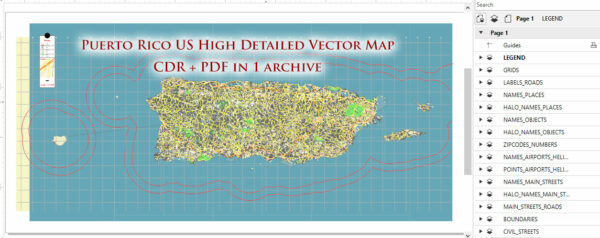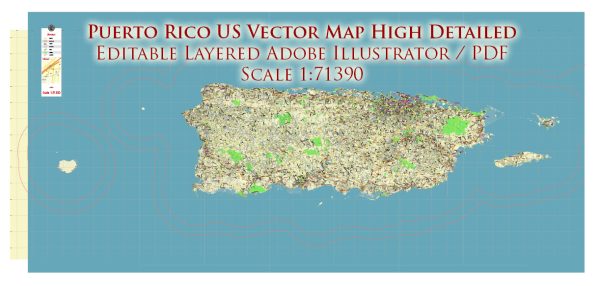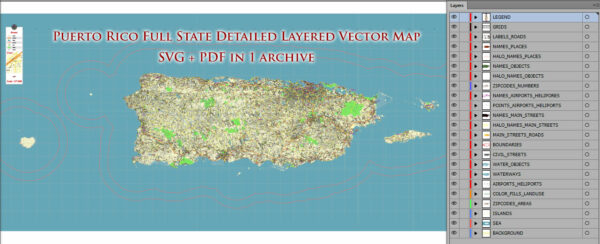Puerto Rico’s history of urban development is characterized by a complex interplay of historical, social, economic, and political factors. The evolution of its urban landscape reflects the island’s colonial past, economic shifts, population growth, and modernization. Here is an overview of key periods and aspects of Puerto Rico’s urban development:
- Indigenous Settlements: Before the arrival of Christopher Columbus in 1493, the indigenous Taíno people inhabited Puerto Rico. They had established settlements with a basic form of urban organization, featuring circular or rectangular ball courts and plazas. However, these settlements were significantly altered with the arrival of the Spanish.
- Spanish Colonial Period (1493-1898): The Spanish colonial period had a profound impact on the urban development of Puerto Rico. The Spanish established several cities, including San Juan (founded in 1521), which became a strategic hub for trade and defense. The layout of these cities often followed a grid pattern with a central plaza and important buildings such as churches and government offices.
- Agricultural Economy: For much of its history, Puerto Rico’s economy was based on agriculture, primarily sugar production. This influenced urban development as cities and towns grew around sugar plantations and processing centers. Ponce and Mayagüez, for example, became important urban centers due to their proximity to sugarcane plantations.
- Industrialization (Late 19th to Early 20th Century): The late 19th and early 20th centuries marked a shift toward industrialization. The sugar industry declined, and new industries, such as textiles and tobacco, emerged. This led to the growth of urban areas as people migrated from rural areas to work in factories. San Juan and Ponce continued to expand during this period.
- U.S. Colonial Rule (1898-Present): After the Spanish-American War in 1898, Puerto Rico became a U.S. territory. This period saw increased American influence and investment in infrastructure. The urban landscape underwent further changes with the introduction of modern utilities, transportation systems, and the expansion of existing cities.
- Migration and Population Growth: In the mid-20th century, Puerto Rico experienced significant migration to the mainland United States for economic opportunities, leading to a decline in the agricultural sector. This migration also influenced urbanization patterns, with increased development in cities as the population concentrated in urban areas.
- Tourism and Economic Changes: In the latter half of the 20th century, tourism became a major economic driver. The development of tourism infrastructure, including hotels and resorts, influenced the urban landscape, particularly in areas like San Juan and Ponce. Urban planning efforts focused on accommodating the growing tourism industry.
- Contemporary Challenges: Puerto Rico faces contemporary challenges in urban development, including issues related to infrastructure, housing, and economic disparities. The impact of natural disasters, such as Hurricane Maria in 2017, has also highlighted vulnerabilities in the island’s urban infrastructure and the need for resilient urban planning.
Throughout its history, Puerto Rico’s urban development has been shaped by a combination of cultural influences, economic shifts, and geopolitical factors, resulting in a diverse and dynamic urban landscape. The island’s cities continue to evolve in response to modern challenges and opportunities.




 Author: Kirill Shrayber, Ph.D.
Author: Kirill Shrayber, Ph.D.